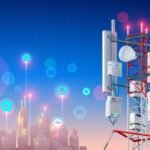The Role of IoT in Transforming Telecommunications
The Internet of Things (IoT) is significantly reshaping various industries, and telecommunications is no exception. By connecting a multitude of devices and systems, IoT is driving innovations and transforming how telecom networks operate. Here’s a look at the pivotal role IoT plays in revolutionizing telecommunications.
Enhanced Network Management
IoT provides advanced tools for network management, enabling telecom companies to monitor and manage their infrastructure more effectively. IoT sensors and devices can track network performance in real-time, identifying issues such as congestion or hardware failures before they impact service. This proactive management helps maintain optimal network performance and reliability.
Improved Customer Experience
The integration of IoT technology allows telecom companies to offer more personalized and efficient customer experiences. IoT enables better tracking of customer usage patterns and preferences, leading to tailored service plans and targeted promotions. Additionally, IoT-powered customer service tools can automate support processes, reducing response times and enhancing customer satisfaction.
Optimized Operational Efficiency
IoT technology enhances operational efficiency by automating various aspects of telecom network management. For instance, IoT devices can automate network configuration and maintenance tasks, reducing the need for manual intervention and minimizing human error. This automation streamlines operations, reduces costs, and increases overall efficiency.

Innovative Service Offerings
The IoT ecosystem opens up new opportunities for telecom companies to develop and offer innovative services. By leveraging IoT data, telecom providers can create new business models, such as smart city solutions, connected healthcare, and intelligent transportation systems. These services not only diversify revenue streams but also position telecom companies as leaders in technological advancement.
Data-Driven Insights
IoT generates vast amounts of data that can be analyzed to gain valuable insights into network performance, customer behavior, and market trends. Telecom companies can use this data to make informed decisions, optimize network infrastructure, and develop strategies to meet evolving customer needs. Data-driven insights also support predictive maintenance, reducing downtime and improving service quality.
Enhanced Network Security
Security is a critical concern in telecommunications, and IoT technology helps address this challenge. IoT devices can monitor network traffic for unusual patterns or potential threats, providing early warnings of security breaches. Implementing IoT-based security solutions enhances the overall security posture of telecom networks, protecting both the infrastructure and customer data.
Scalable Solutions
IoT facilitates the deployment of scalable solutions that can adapt to growing network demands. As the number of connected devices continues to increase, telecom companies can leverage IoT technology to scale their infrastructure efficiently. IoT-enabled solutions allow for dynamic adjustments to network capacity and resources, ensuring seamless scalability and service continuity.
Future Prospects
The role of IoT in telecommunications is expected to grow as technology continues to evolve. Future advancements in IoT, such as 5G and edge computing, will further enhance telecom networks, offering even more opportunities for innovation and growth. Telecom companies that embrace IoT will be better positioned to leverage these advancements and stay ahead in a competitive market.
Conclusion
IoT is transforming telecommunications by enhancing network management, improving customer experiences, optimizing operations, and driving innovation. By leveraging IoT technology, telecom companies can not only address current challenges but also position themselves for future growth and success in a rapidly evolving industry.



